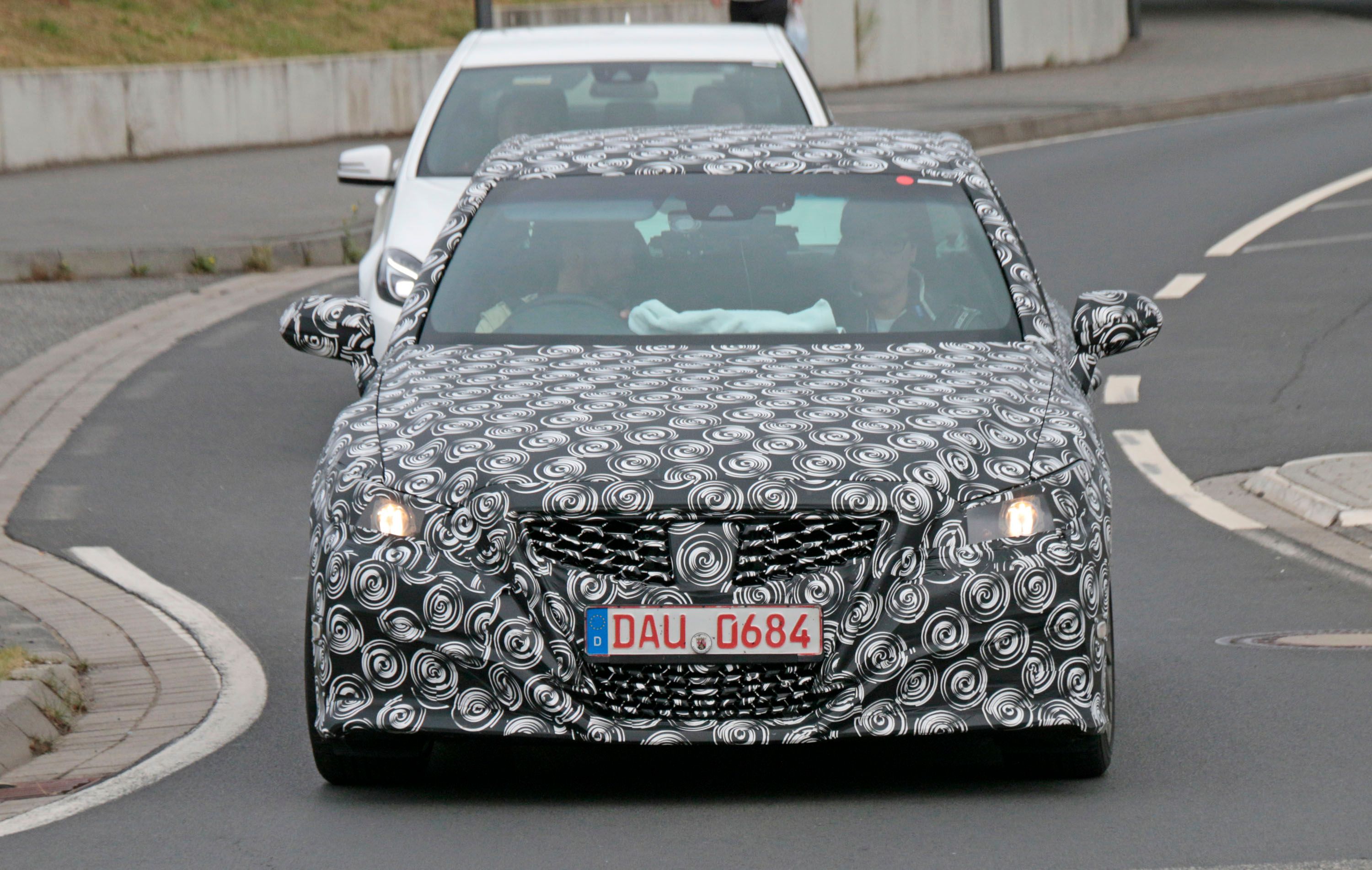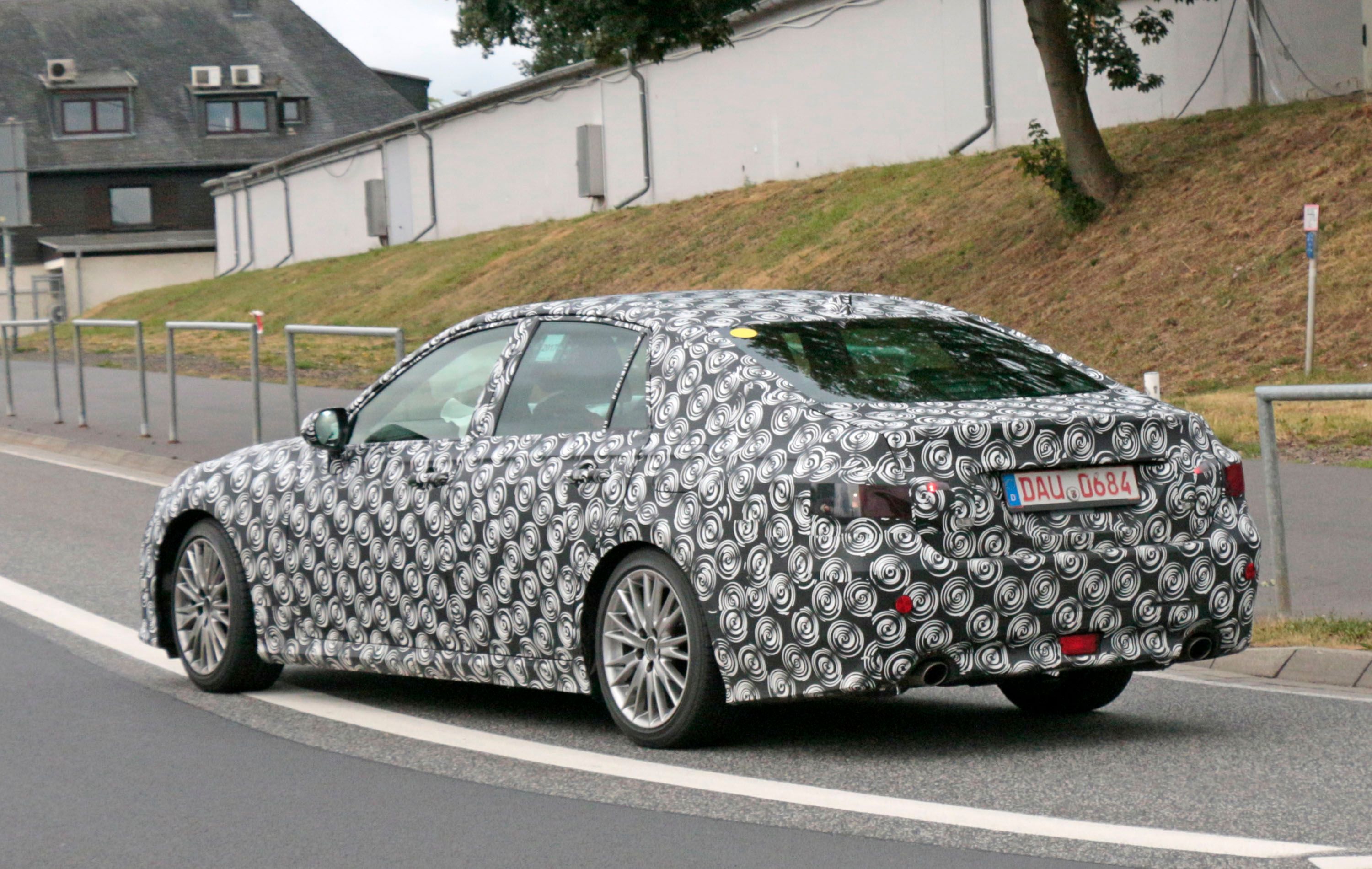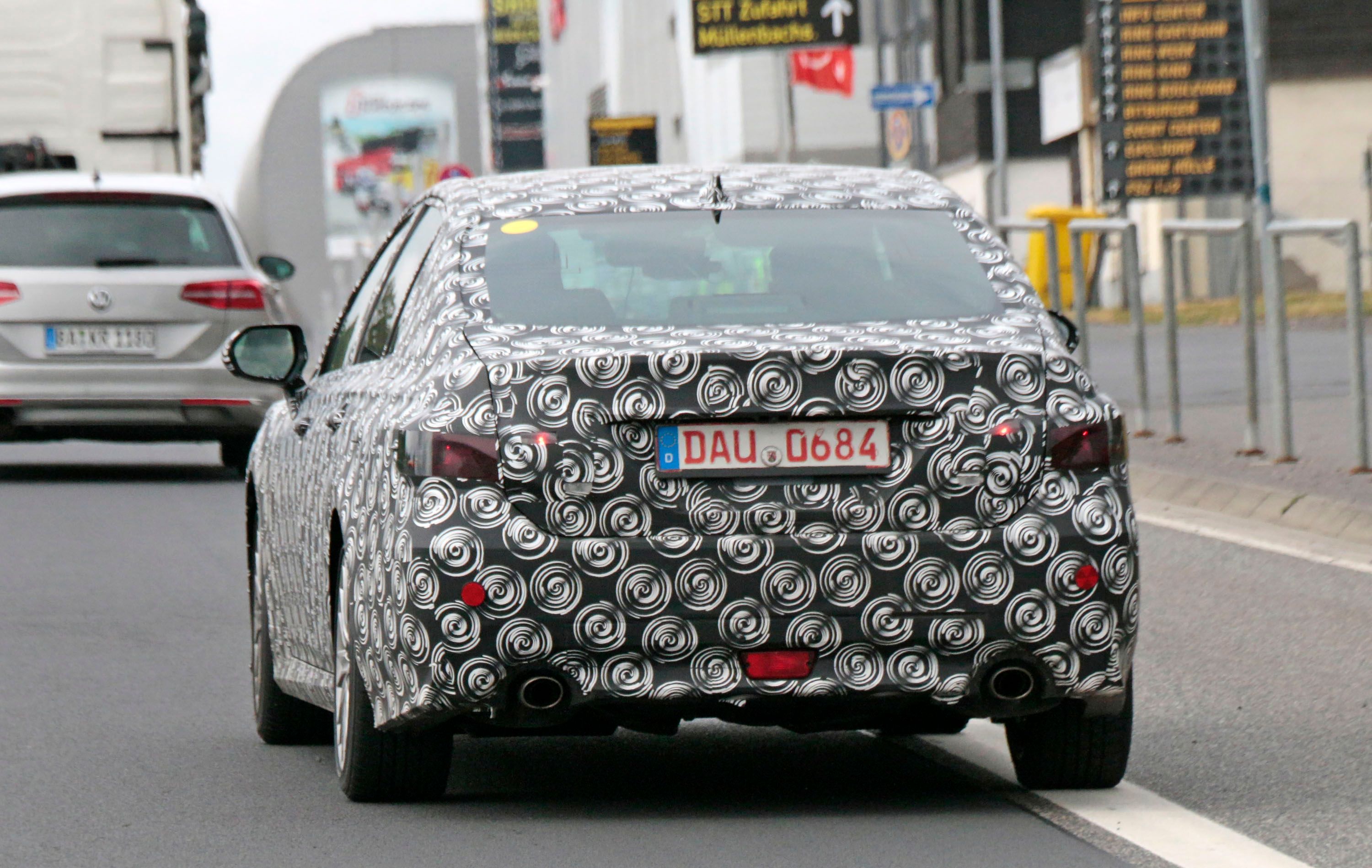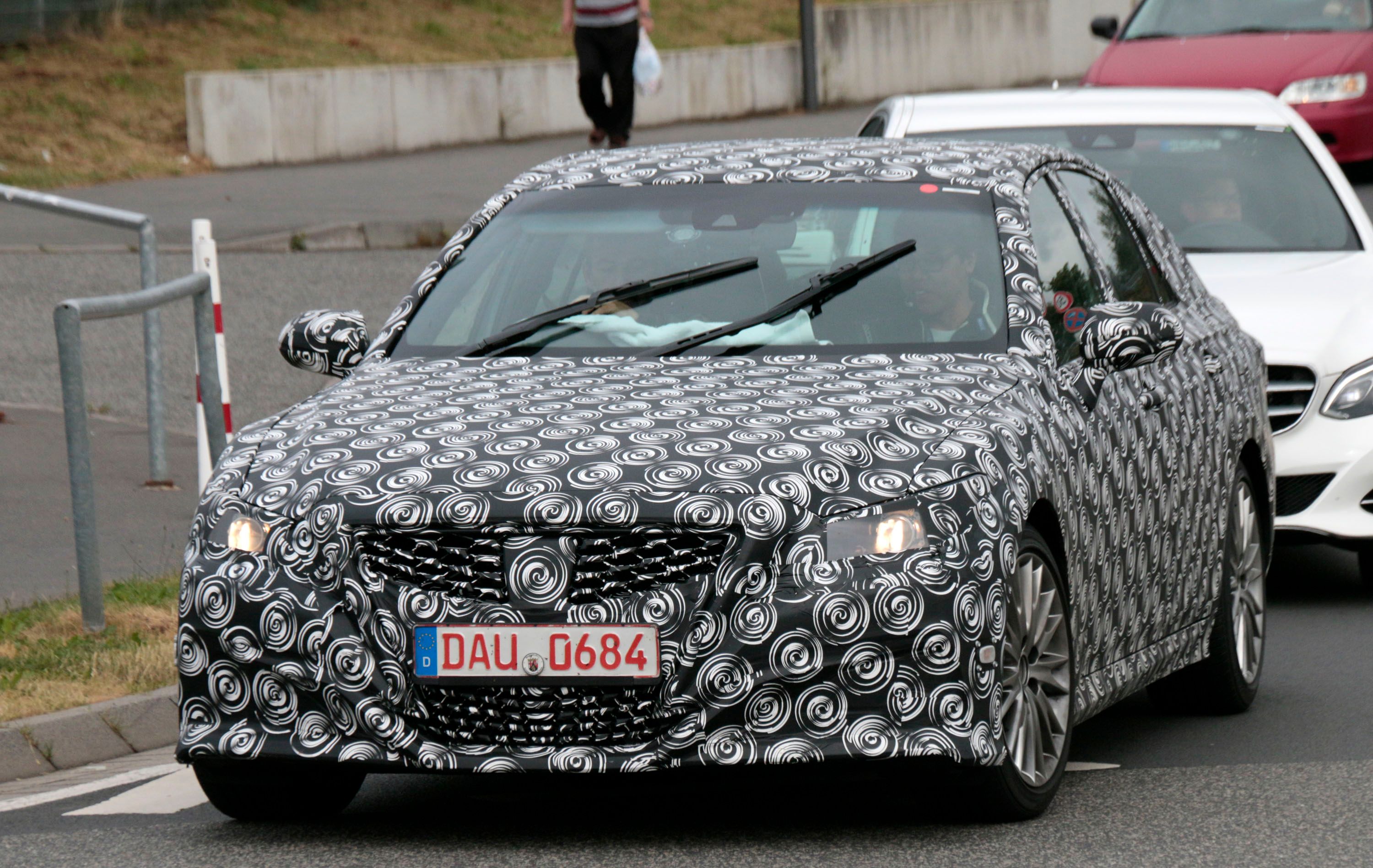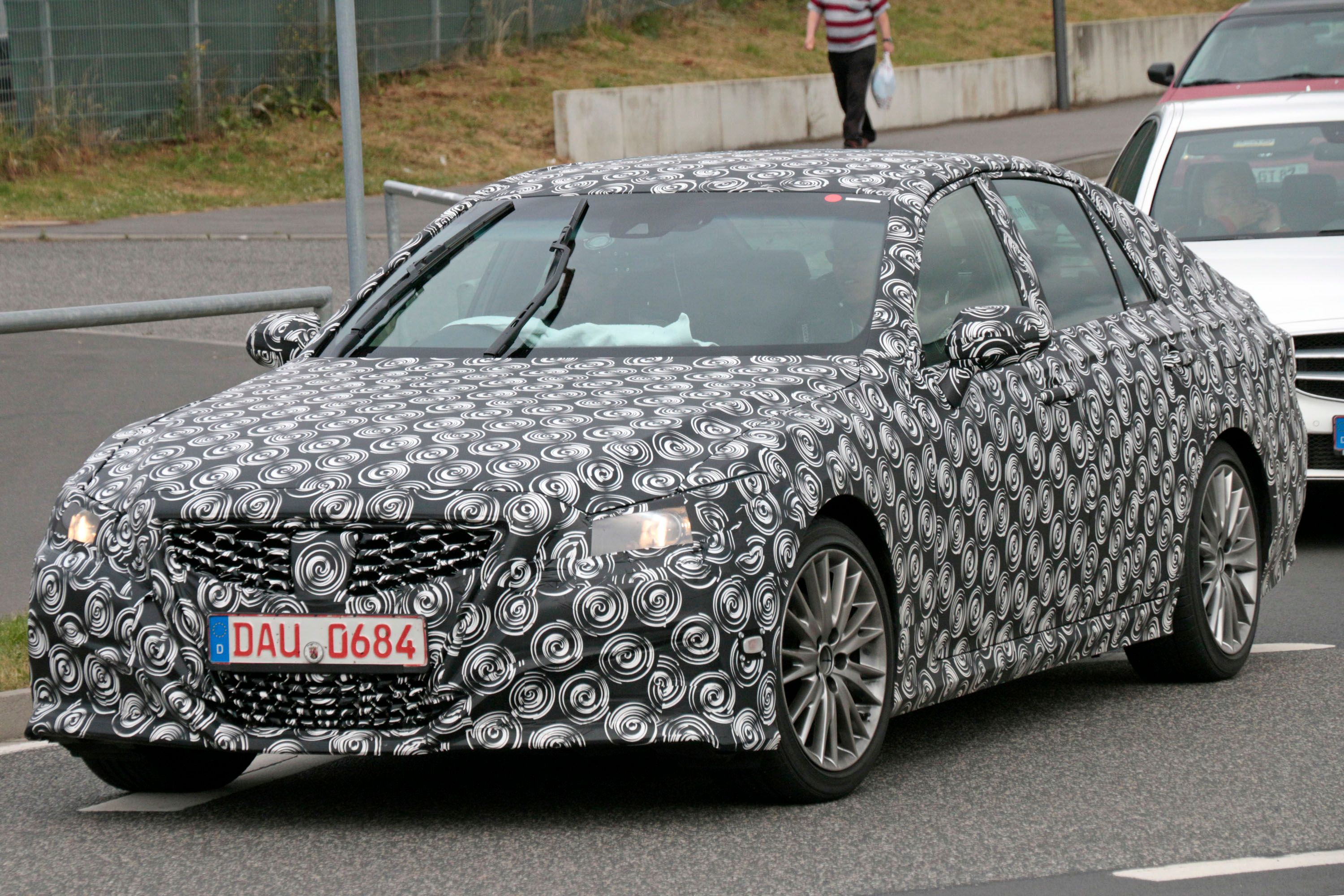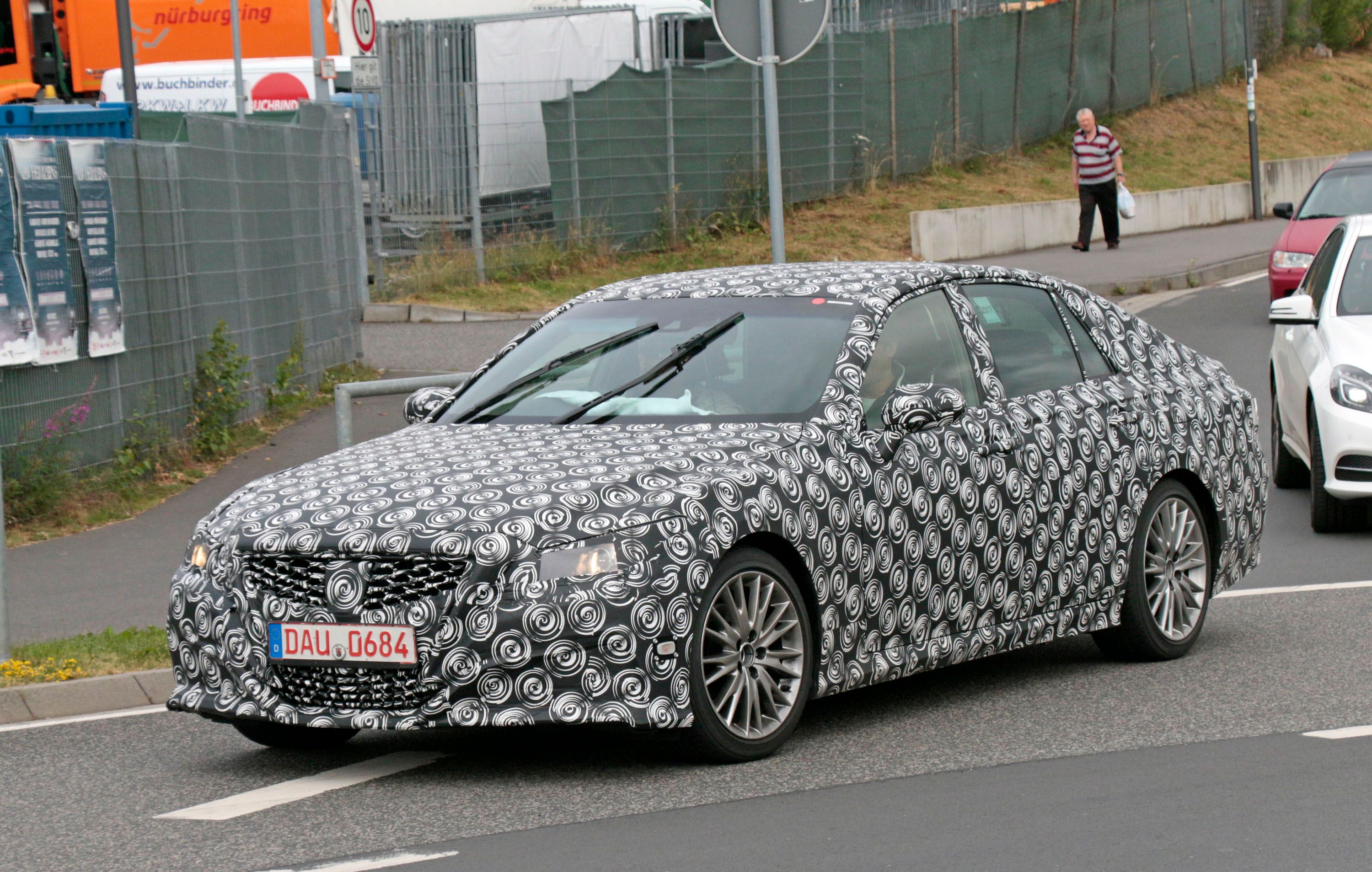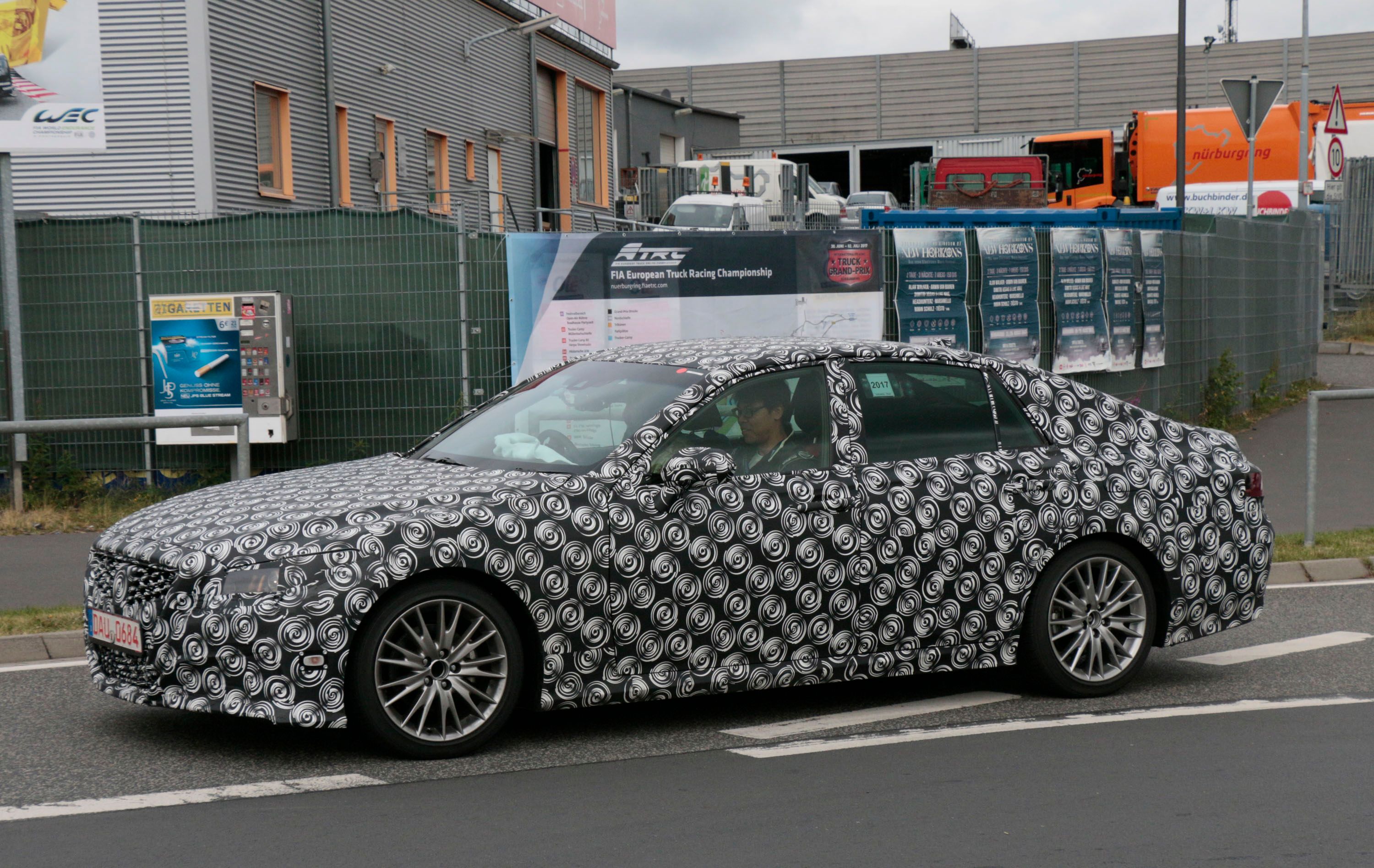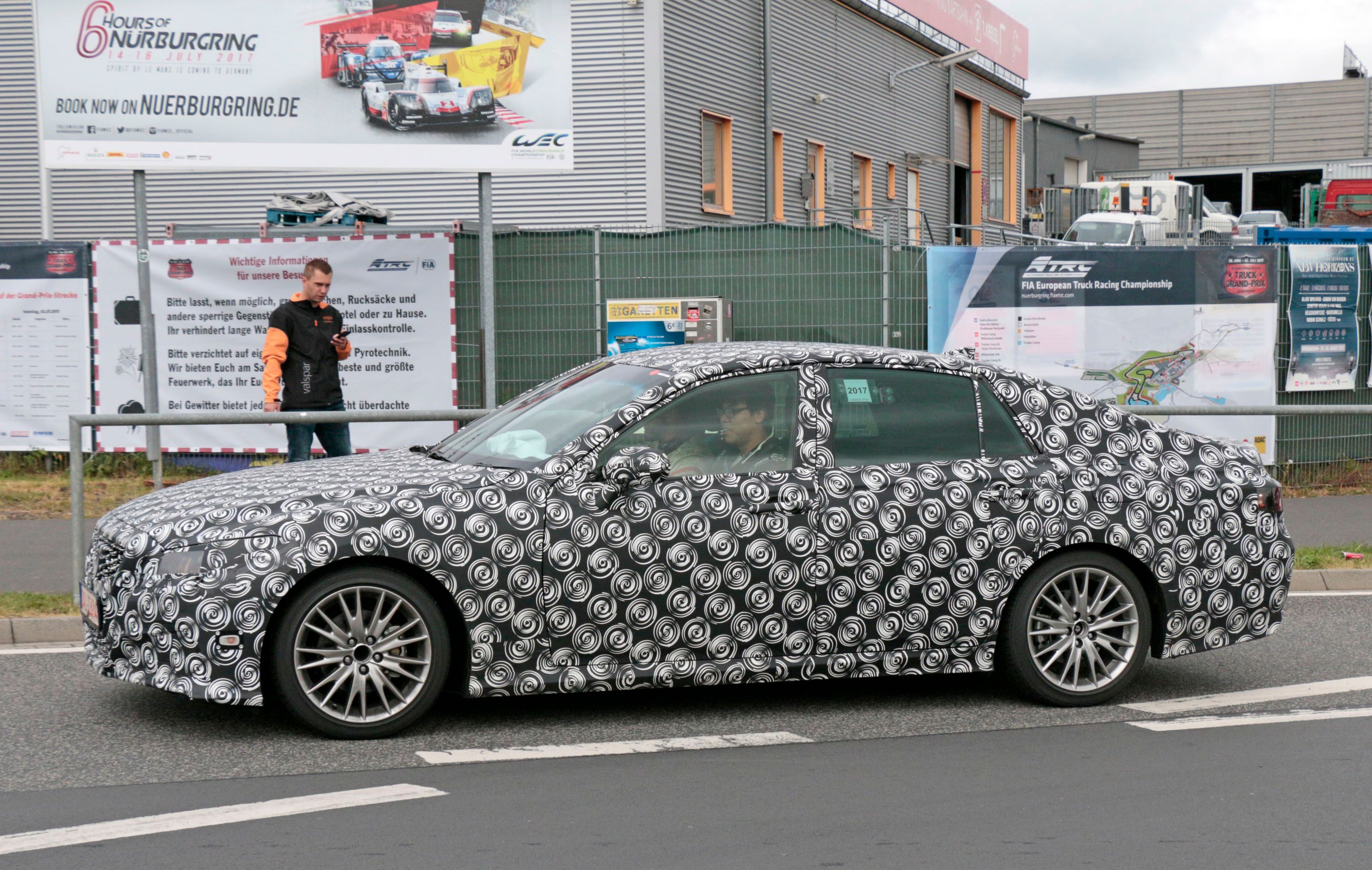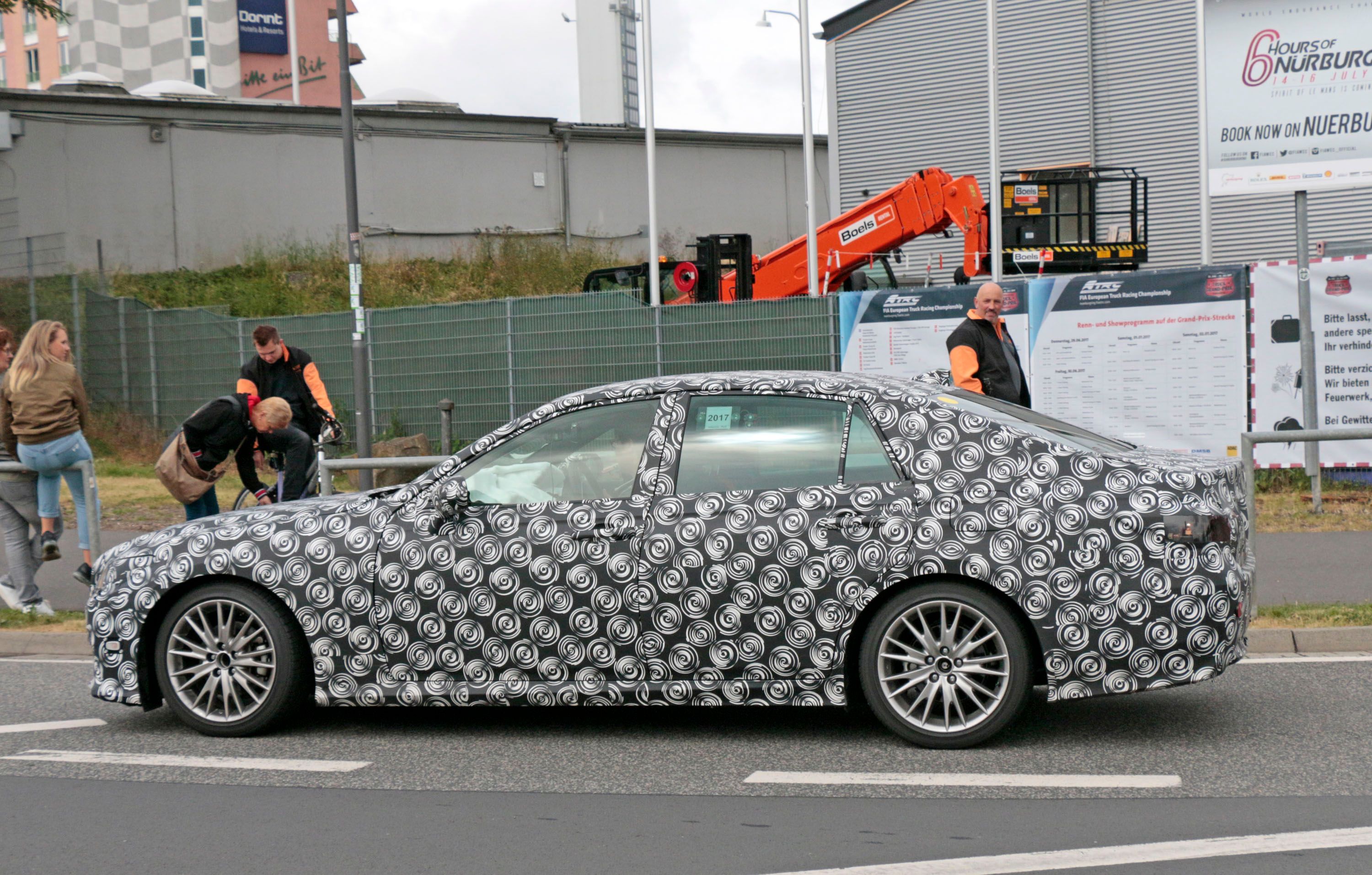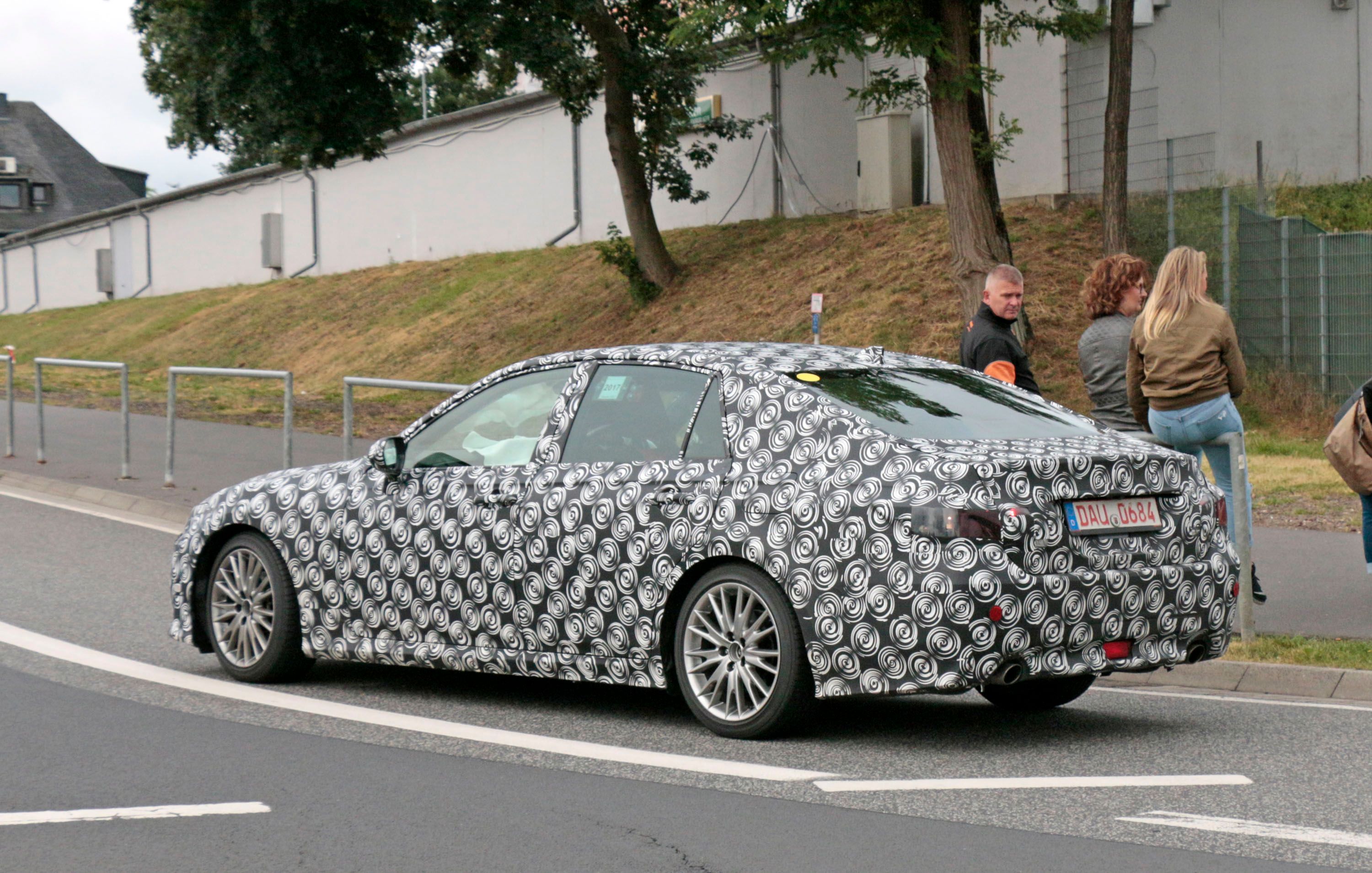For a while now, rumors have been circulating, and it seems as if the Lexus GS may find itself on the guillotine at the end of the fourth and current generation. That generation has been around since 2011 and was just updated in 2015, however, the GS has had some seriously insignificant sales, which is probably why rumors seem to point toward the ES taking the GS’s place in as the mid-sized executive box on wheels. And, considering Lexus sells roughly 10 times more ES than GS models, the rumors make sense. However, we’re now looking at some spy shots that point to those rumors being wrong. We’re guessing the model you see here is the new GS, but it could also be the next-gen ES as it’s currently about time for a generational shift as well. Either way, there is something fresh coming to Lexus’ stable soon, and if it is the GS, rumor has it that the next-gen GS F will get a 4.0-liter, twin-turbo V-8 that’s good for some 590 ponies and 500 pound-feet of torque.
With that said, the spy shots show a fairly revised model regardless of what it really is, but we don’t know much else about it at this point. It is clearly a hybrid, as the yellow tape on the back window is a safety requirement for hybrids testing on the Nürburgring. Potential debut dates, based on the current life cycle of both the ES and GS, point to a late 2018 debut with the potential to be a 2019 model with 2020 seeming more feasible. So, we should be learning more about what’s lurking under the camo in the somewhat near future. But, until then, we’re going to assume this is a next-gen GS, so let’s take a better look and talk some more about it.
2019 Lexus GS
- Make: Array
- Model: 2019 Lexus GS
- Engine/Motor: inline-4
- [do not use] Vehicle Model: Array
Exterior
Is it the next-gen GS or ES? We don’t know for sure, but one thing is for sure: Regardless of which model it is, there’s going to be some drastic changes based on these spy shots.
For starters, it looks like the classic Lexus spindle grille could be a thing of the past, as this model seems to make use of a completely different nose layout. Now, let’s be clear – this is a test mule, and there is some padding underneath that camo, so take what is said from this point on with a grain of salt… or two. But, it looks like this Lexus is sporting a dual grille layout with a smaller, sporty grille up top and a smaller air dam down below. It’s clearly divided in the middle as there is a plate attached to that part of the fascia. Based on the marks we can see in the camo, it almost looks as if the name of the game here is going to be curves. There is a stout curve at the bottom of the fascia that comes upward along the sides of the grille and look like they could transition into the top of the corner vents that are currently covered up. Needless to say, this could be a very fresh look.
Furthermore, notice how the headlights are recessed just a bit? If you look close enough, you can see the outline, even under the camo, and these clearly wraparound to the fenders, meaning they will have integrated side markers. The other particular thing to note here is that the hood is extremely sleek and smooth, while the forward most edge is sharply defined in the corners – it’s a unique look and should translate to a lot of character when the camo comes off. By the way, none of this is surprising, considering Lexus was benchmarking this mule against a Mercedes E-Class, so it’s clear who they are going after with this baby.
Moving to the side profile, there’s not a lot to really talk about. It appears as if this car is going to have an excessively smooth design for the sides that includes a bit of masculinity over the front wheel wells and a very mild body line about three inches below the belt line. This body line likely blends into the front fenders but should wrap around to the deck lid in the rear. The doors appear to be completely smooth, but there is a little bit of character to the side skirts if you look close enough. The mirrors on thin and feature short mounting arms while the roofline itself is actually rather flat. Be that as it may, the sedan still has a rather sporty look out back that’s to the extremely wide C-pillars. Finally, the taillights do wrap around and protrude from the rear quarters just a bit while the door handles are very thin and quite hard to make out with all that swirly camo in the way. Not bad.
Around back, we can’t make out much of the taillights, but from this view, you can clearly see that the taillights are cocked from a horizontal position just a bit and come to a very sharp point, that is aimed directly at the lower rear corner of the stationary glass on the rear doors. Obviously, a well thought out design cue, the taillights appear to be a little taller around back but don’t appear to extend onto the decklid. This could make for an interesting look when the camo comes off. The rear deck also has a small fin shaped out of the metal, while the lower portion of the lid sits just inside the lip of the rear fascia. The rear fascia itself seems rather uneventful with the exhaust outlets integrated at the very bottom. What about that long rear glass, though? Somehow, it really ties the whole design together.
Visual Comparison
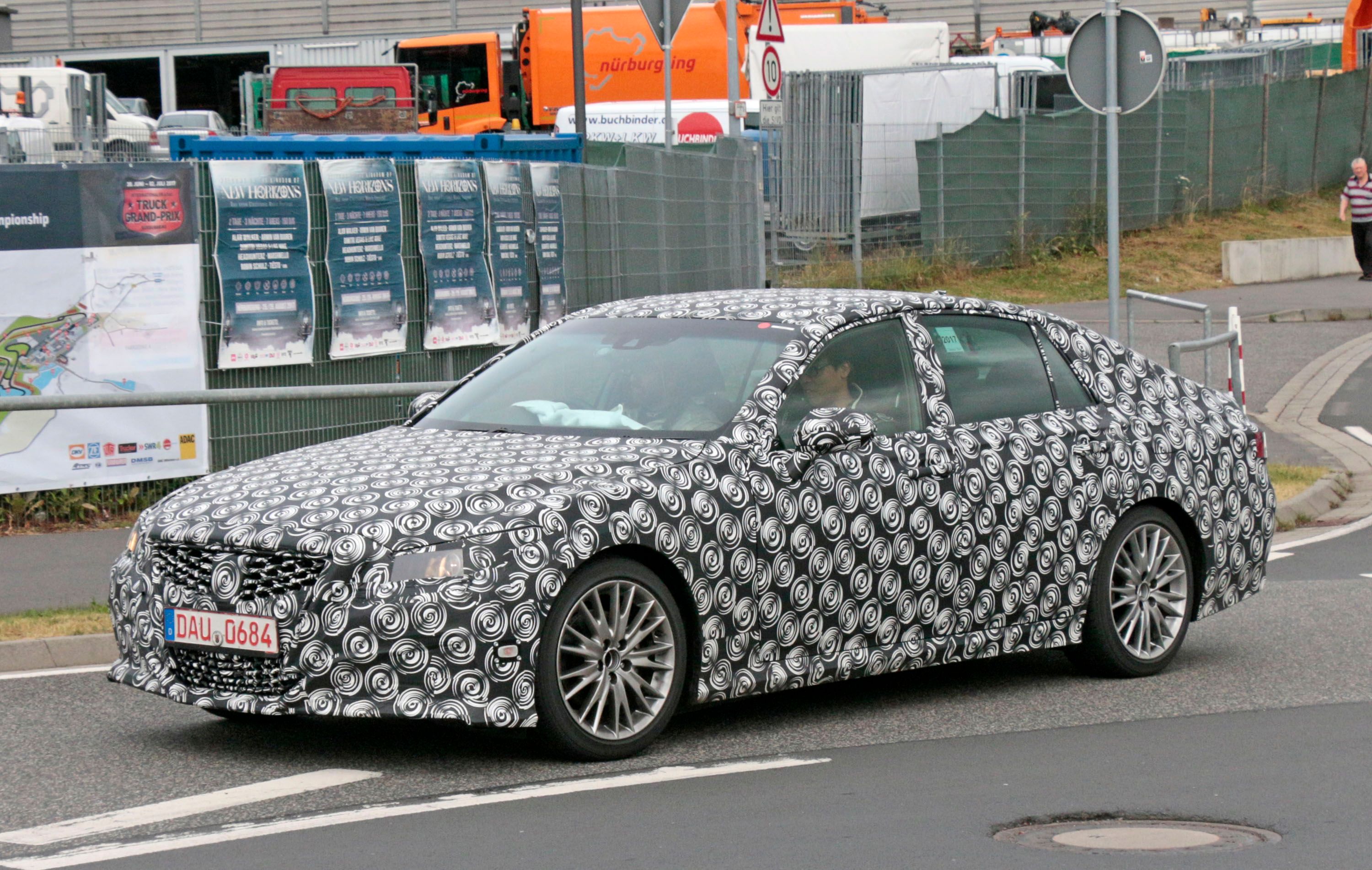
|
||
|
2019 Lexus GS (or ES?) |
Interior
|
Interior from 2016 Lexus GS |
At this point in time, we haven’t had the chance for a clear shot of the interior. And, this early on, it would likely be covered up anyway. But, regardless of whether this is a new GS or new ES, the exterior is changing a lot, so chances are the interior will, too. It could be the beginning of a whole new design for Lexus sedans, which would be quite refreshing to see considering some just don’t like the big bulky spindle grilles. With that said, this is a Lexus and it’s all about luxury, so expect to see healthy doses of wood and leather inside, just like you see in the 2016 Lexus GS above. The infotainment screen on that model is already pretty large, so don’t expect that to grow much and will likely get a software update at most. Of course, big screens are getting to be a trend now, so Lexus could go all Tesla on this baby and throw an excessively large screen in there.
|
2016 Lexus GS front seats |
Expect to see the center stack get heavily revised with few buttons as Lexus transitions into a cleaner look. The HVAC controls will likely be revamped and will be smaller than before, while the center console should get a fresh redesign too. The center console will still sit just as high, which is very comfortable in the current GS but expect to see a new shifter and perhaps a new way to control the infotainment system. The dash will likely get shorter on this model but should have more defining lines than before, and I wouldn’t be surprised to see Lexus go with a true wraparound look up front.
To the rear, there won’t be a whole lot to talk about, but Lexus has to keep up with the Jones’, right? The rear seats will get a redesign just the fronts, while the door trim panels should continue to mimic the fronts. There will be less wood trim back here, but rear seat passengers should get their own HVAC controls, and we could see an option for a rear seat infotainment system. There will be multiple USB charging points as well as a Wi-Fi hotspot to keep the kids busy and stop them from running up your phone’s data plan (just make sure you buy a good enough data plan for the car, though) All told passenger space could improve a bit in comparison to the current GS or even more if compared to the ES. Cargo room should remain about the same, but there could be an extra cubic foot here or there.
Drivetrain
|
Engine from current GS shown here |
At this point, there are clearly more questions than answers about this car, so what lurks under the hood is a complete mystery. The current GS offers up two engine choices – a 2.0-liter, turbocharged four-banger that’s good for 241 horsepower and 258 pound-feet of torque or a 3.5-liter V-6 that’s good for 311 horsepower and 280 pound-feet. A Hybrid option pairs that same 3.5-liter with a battery and electric motor to push power output up to 338 horsepower. The hybrid models and those equipped with the naturally aspirated 3.5-liter can be had with AWD if desired.
With this in mind, the next-gen model should bring some improvements to the engine lineup. Expected to see that 3.5-liter shrink in size a bit and gain at least one, if not two, turbochargers. The four-cylinder option should carry over, but it should be tuned to deliver just a bit more horsepower and torque. The only thing we know of for sure is that the next-gen will see a hybrid trim level that will replace the 450h trim level. We know this because of the yellow marker on the rear glass of the test mule. That’s a special flag designed for safety reasons to let others on the Nurburgring know that this is indeed a hybrid vehicle. So, we don’t know whether this is an ES or GS, but we do know that there will be a hybrid option.
There’s also a rumor going around about the GS F. Despite the rumor that the GS will be cancelled to allow the ES to serve as the executive sedan in this niche, another rumor points to the opposite and even suggests that the GS F will be powered by an all-new 4.0-liter, twin-turbo, V-8 that comes with more than 590 horsepower and 500 pound-feet of torque. This is huge, considering the current GS F makes use of a 5.0-liter, naturally aspirated unit that’s good for 467 horsepower and 389 pound-feet of torque. That means that the next-gen model could see an improvement of 123 horsepower and more than 100 pound-feet of torque. The engine in question is also rumored to be used in the upcoming LC F, albeit with a slightly different tune. If the rumors prove to be true, the GS F would be able to hit somewhere around 180 mph and should be able to make the 60-mph sprint somewhere in the low-four-second range. Not bad. For now, we’ll just have to wait, but things are already sounding pretty promising should the GS live on to see another generation. If it doesn’t, then the ES should see some serious improvements in power output and performance numbers.
Pricing
At this point, pricing is really up and the air, and it’s really too early to even justify talking about it considering we’re not even sure if the GS name will live on through the end of the decade. Be that as it may, the current GS lineup starts out at $46,310 for the entry-level GS Turbo RWD. Move up to the 350 RWD, and you’ll pay $50,695. If you want AWD, however, you can save a few bucks as the starting price is pegged at $50,365. Get yourself a RWD 450h, and you’ll shell out $63,635. Moving over into the F Sport lineup, you can get RWD versions of the Turbo or 350 models for $53,980 or $54,810, respectively. Move up to the 350 F Sport AWD for $56,555 or the RWD 450h F Sport for a staggering $68,680.
With that said, I’d expect to see prices increase across the board a bit should the GS name live on. Expect to see an increase of anywhere between $1,000 and $3,000 depending on the trim level and engine options available at the time of launch.
Competition
BMW 5 Series
The 5 Series was revamped for the 2017 model year, presenting itself with a lot of 7 Series design cues that include a larger grille up front, flatter headlamps and LED adaptive lighting. The interior is also revised to look a lot like the 7 Series with the center stack looking almost identical and the infotainment system getting the newest software update. A new shifter handle provides a sportier feel while the new dashboard design actually improved knee room up front by more than an inch. 16-way adjustable seats are standard, but if you like the best in comfort, you can opt for 20-way units with ventilation and massage functions. There’s also a rear-seat infotainment option that can be had if you’re will to pony up.
You’ll find the same 2.0-liter four-banger and 3.0-liter inline-six under the hood, but Bimmer took the time to re-engineer them for better reliability and more power. The 2.0-liter is good for 248 ponies and 258 pound-feet. That’s enough to get the 5 Series up to 60 mph in six seconds with RWD or 5.8 clicks with xDrive. The 3.0-liter saw an improvement of 33 horsepower and 27 pound-feet, bringing total output up to 335 ponies and 332 pound-feet. It can hit 60 mph in 4.9 seconds in RWD or 4.7 with xDrive. Finally, there’s an M550i model that makes use of a 4.4-liter V-8 that’s good for 456 ponies and 480 pound-feet – that’s enough for a 3.9-second sprint to 60 mph! Pricing for the 5 Series starts out at $51,200 and climbs to as much as $72,100 or the range-topping M550i.
Read our full review of the BMW 5 Series.
Mercedes E-Class
Considering the test mule we discussed above was being benchmarked with a Mercedes E-Class, it’s only fair that we look to it as a competing model as well. Like the 5 Series, the E-Class was updated for 2017, and like the 5 Series, engineers looked to its bigger brother for inspiration. As such, it has the same styling language as the larger S-Class and features a lot of the same technology packed into its new platform. And, since the interior is also based on the S-Class, the E-Class features one of the most attractive interiors on the market. It has an organic dashboard with a huge touchscreen in the middle, high-sitting and wide center stack, and higher end models even get a 12.3-inch digital instrument cluster. Features include linguatronic voice control, a command rotary dial, and there are even LEDs used for interior lighting that can be had in 64 different colors. Of course, you’ll find plenty of leather and wood appointments – an absolute must for this niche.
The E-Class is available in one basic trim level, and that’s the E300. It comes with a 2.0-liter four-cylinder that’s good for 241 ponies and 273 pound-feet. It can hit 60 mph in 6.2 seconds and tops out around 130 mph. Of course, Mercedes knows better than to leave its resident midsize with just one trim level, so move up to the AMG line, and you’ll find the E43, which makes use of a 3.0-liter powerplant that delivers 396 horsepower and 384 pound-feet of torque. It’s enough to get the sedan up to 60 mph in 4.5 seconds while top speed is pegged at 155 mph. If that’s not enough, you can snag up the E63 S. It is powered by a 4.0-liter V-8 that delivers a potent 603 horsepower and 627 pound-feet of torque. That’s enough for a 3.3-second sprint to 60 mph, while top speed is still electronically limited to 155 mph. The E300 starts out at $52,950, but you’ll be asked to pay for $55,950 if you want AWD. Move up to the AMG line, and you’ll have to pony up $71,600 for the E43 or a divorce-inducing $104,400 for the E63 S sedan.
Find out more abut the Mercedes E-Class.
Conclusion
Well, here we are. We’ve covered a lot, but we still don’t know what it is we’re actually looking at. This could be the next-gen GS, or that could cease to exist, and this thing could sport the ES badge. It’s not likely to be a new model, and something tells me that Lexus doesn’t want to give up on the GS just yet, so I’m putting my money on it being a next-gen GS. Plus, with the rumors that the GS F will come with at least 590 horsepower, Lexus will finally have a fighter that can stand up those with an M or AMG badge – a must in such a competitive market. Of course, that still leaves the problem with the ES eating up most of the GS sales, so perhaps Lexus will cut out the ES or redesign it to allow it to sit properly in the line. It’s really hard to say, and things could really go either way.
Is this the next-gen GS, the next-gen ES or something completely different? Will the GS even live on through the turn of the decade? Let’s us know what you think in the comments section below!
References
Read our full review on the current Lexus GS.
Read our full review on the current Lexus ES.


